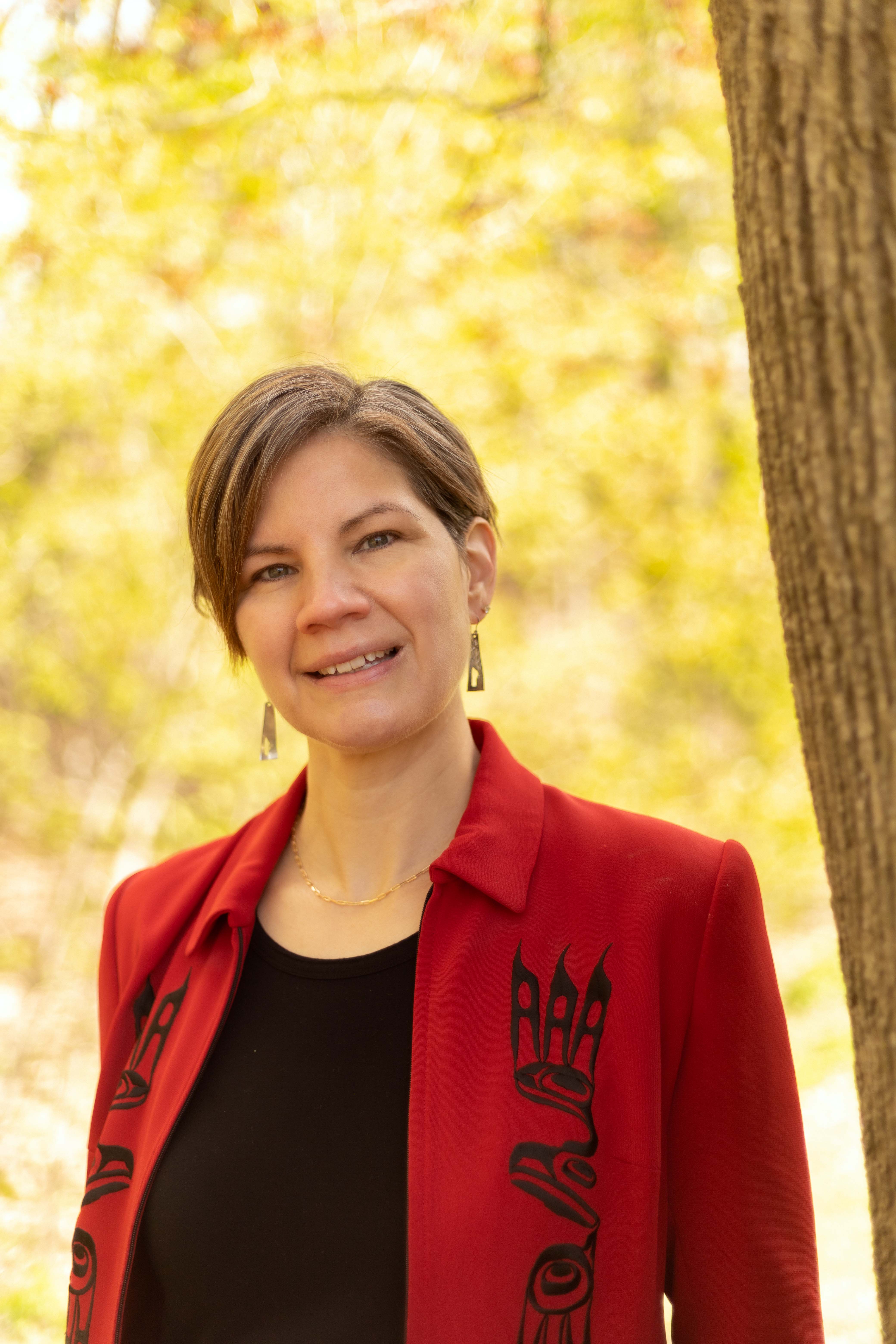Andrea Johnston (BA ’02 Innis) strengthens communities using an Indigenous lens.
I started Johnston Research Inc. in 2001. Neyaashiinigmiing ndojeba, Toronto ndindaa. Mikinaak dodem. I have worked full-time in the field of Indigenous evaluation for over 20 years. I believe strongly in the reconciliation between Indigenous and Western thought in the field of evaluation. This is what drives my work as an evaluator—striving to find better ways to document the truth. As a trainer, my view is we are born as unbiased evaluators; however, we need help as adults to reimagine how to look through an unbiased lens that enables new thinking to be taught.
Ahneen, Andrea L.K. Johnston Nindizhinikaaz
 This year’s theme for the magazine is “reimagining.” You are a leader in the Canadian program and policy evaluation field, using an Indigenous lens to improve Indigenous community programming in areas of health, justice, education, culture, and employment. How does evaluating programs using an Indigenous Worldview help to effect a positive reimagining in those communities?
This year’s theme for the magazine is “reimagining.” You are a leader in the Canadian program and policy evaluation field, using an Indigenous lens to improve Indigenous community programming in areas of health, justice, education, culture, and employment. How does evaluating programs using an Indigenous Worldview help to effect a positive reimagining in those communities?
An Indigenous lens in evaluation allows the doors to open. It is as if someone had previously only allowed you to partially voice your concerns and thoughts about success. A Clan Mother in Alaska once told me that, “Evaluation is like looking into the mirror, except the reflection is a painted face.” What we do at Johnston Research is teach people to reimagine how to better paint that face, and enable the entire door to be opened.
We do a lot of work in Indigenous communities. They need this training. It allows them to feel like they are being heard, and they can breathe again. They tell me that they feel the truth is finally being heard. The whole reimagining is about opening the doors again, to allow the unheard to be acknowledged, listened to, and to see movement and new actions occurring.
You teach workshops on intersecting Indigenous cultural foundations—including the concept of reconciliation—with conventional Western approaches to program evaluation. Recognizing that our personal evaluation process is shaped by culture and experience, do you see an opportunity to move that intersectional approach beyond the field of program evaluation? How can all of us benefit from an understanding of Indigenous knowledge and practices?
I once heard an Indigenous man say that when he walked down the streets of Toronto and gazed into people’s eyes, it was as if they weren’t present in their lives. Applying an Indigenous lens to evaluation is about being entirely present in the moment. It is “thinking on your feet.” And it is as much about personal observation as enabling a real conversation to happen.
My daughter sees the way her school friends hide behind their closed doors. In Indigenous evaluation we allow spirit to enter and support the work. A lot of healing is needed, and it is not just Natives who need to heal and “get over it.” Non-Natives can benefit from this type of training to allow them to experience being present, and acknowledge the real harm that can be done with an evaluation practice that hides behind closed doors—just like school-aged children in the playground.
Reimagining for non-Natives is to engage in an approach that in a lot of ways turns Western evaluation upside down. It looks at what matters to Indigenous Peoples, and supports self-determination.
(Photo of Andrea L.K. Johnson, above, by Shayla Anderson)
This story originally appeared in the 2020/21 Innis Alumni & Friends magazine.